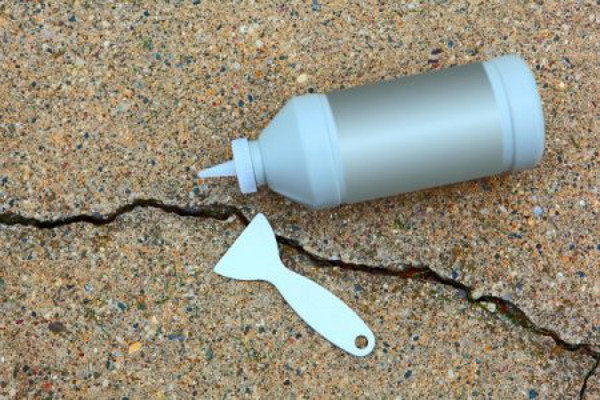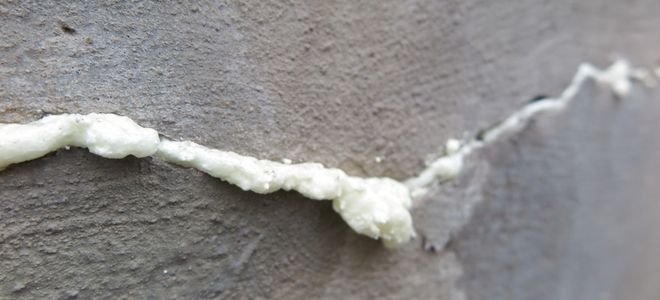How to Repair a Crack in Concrete Patio Updated
How to Repair a Crack in Concrete Patio
While patios can be a beautiful and functional addition to the outdoor living space in your abode, they ofttimes develop cracks. In order to prepare the cracks in a physical patio, you will need to follow these steps.
Stride 1 - Make up one's mind the Fissure Size
The size of the cleft volition make up one's mind the type of repair y'all make, and nearly importantly, the textile you apply to fill the crack.
At that place are ii types of cracks in concrete. The offset is a hairline crack, meaning it is very narrow and likely quite shallow. The 2d is a true crack, which can vary in size, just is deeper and wider.
Step 2 - Choose a Filling Material

The filling material for hairline cracks is likely to exist a sand mixture of Portland cement. Epoxy fillers are another option that may work, depending on the width of the crack.
Larger concrete cracks utilize either epoxy filler, sand cement mixture, or a coarse amass physical, depending on the width and depth of the fissure.
An epoxy filler is bang-up for a cleft that is one inch or less in width most of the way forth, and has a fairly shallow depth.
Epoxy fillers are fabricated specifically for concrete, and come up in a greyness color. They are packaged in a caulking tube and are practical past putting the tubes into a caulking gun.
The sand mixture of cement has no large aggregates (i.e.: gravel), so they fit better into narrow areas. The regular (large aggregate) concrete mixes are splendid for substantial cracks that require a great deal of fill up.
Stride 3 - Undercut Larger Cracks
A crack that is larger than a hairline crack may demand to be "undercut" in order to get a good mend.
Using a hammer and chisel, enlarge the crevice slightly, making the bottom of the crevice wider than the top of the crack. This allows the physical to adhere and remain in identify better.
Step 4 - Clean the Surface area
The crack must be thoroughly cleaned, and any loose dirt, concrete, grout, or old filler needs to be removed. Commencement, loosen old thing with a chisel. Then utilise a wire brush to brush away any old clay, rocks, or debris from the crack.
Next, employ a pressure level hose or a garden hose with a nozzle to spray the crack. This serves two purposes—finishing the cleaning and wetting the surface area to help stop wet leaching from the new concrete.
Step 5 - Prep the Crack
Employ either a concrete adhesive in larger cracks or a chemic cleaner, such as phosphoric acrid, to increase adhesive power of the concrete. Chemical cleaners are especially effective on hairline and narrow cracks.
Stride half-dozen - Install Repair Matter

Make a thick paste with the sand mix of cement and strength it into the crack. Then smooth and stop with appropriate tools, or clasp the epoxy filler from the caulking tube.
Make sure to forcefulness it into the cleft and fill the bottom thoroughly.
For very large cracks, mix a thick paste of standard concrete and thoroughly fill the scissure, forcing the mixture into the bottom of the crack first.
Step vii - Stop
Epoxy fillers don't require finishing, but concrete fillers should be finished with a wood bladder or metallic trowel, and then covered for nearly v days, wetting the surface one time a day.
Your cracked concrete patio is at present mended and it's time to have that barbecue! Your guests will be none the wiser.
How to Repair a Crack in Concrete Patio
Posted by: whitneymusby2000.blogspot.com
0 Response to "How to Repair a Crack in Concrete Patio Updated"
Post a Comment